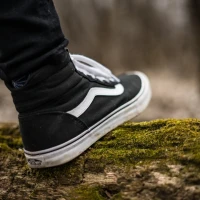Discovering the perfect carry-on trekking pole is like finding the ultimate travel companion for your outdoor adventures. A great trekking pole caters to your comfort, supports your endurance, and enhances your stability on the most challenging of trails. Whether you’re a seasoned hiker or a trail-blazing novice, understanding the essentials of selecting the right pole is crucial. As we delve into the world of trekking, one thing becomes clear: not all poles are created equal. Embark on a journey with us as we unveil the secrets to choosing the carry-on trekking pole that will amplify your hiking experience and keep you moving gracefully across any terrain.
The Fundamentals of Trekking Poles
Trekking demands gear that promises reliability and efficiency. In the realm of hiking essentials, trekking poles stand out for their ability to improve balance, reduce impact on joints, and even increase walking speed. But among the multitudes of options, how does one discern which carry-on trekking pole will rise to the occasion?
The Anatomy of a Trekking Pole
Every trekking hiking pole tip protectors is constructed with a series of critical components that define its performance:
- Adjustability: Trekking poles with adjustable lengths adapt to various terrains and hiker heights.
- Material: Whether aluminum or carbon fiber, the materials dictate the pole’s weight, durability, and flexibility.
- Grip: The comfort and material of the grip (foam, cork, or rubber) can affect your control and comfort.
- Locking Mechanism: Reliability is key; a good locking mechanism keeps the pole’s length secure.
Why a Carry-On Trekking Pole?
Airline travel and backpacking require compact gear. When your trails take you across countries, a carry-on trekking pole is a must. The ability to easily stow your pole in your carry-on luggage or strap it to your backpack keeps your hands free and your travels smooth.
Selecting the Ultimate Trekking Pole
Sifting through numerous products, you might wonder which characteristics to prioritize. Let’s break down the features that make a montem trekking poles pole worthy of your carry-on slot and outdoor escapades.
Material Matters
Trekking poles can be crafted from aluminum or carbon fiber—each with its merits.
- Aluminum poles: Durable and less expensive, they have the tenacity to endure the rugged trails. However, they’re typically heavier.
- Carbon fiber poles: They’re lightweight and absorb more vibrations, beneficial for long treks. Their downside is often the higher price and potential brittleness under extreme stress.
Handle the Grip
A comfortable grip can significantly enhance your trekking vs hiking experience.
- Cork grips: Known to conform to the shape of your hands over time, providing a personalized touch.
- Foam grips: Absorb sweat and are soft to the touch, ideal for warm weather.
- Rubber grips: Great for cold climates, but can lead to blisters in hot conditions.
Lock and Load: The Locking Mechanism
Secure your chosen length in place with a reliable locking mechanism. The common types you’ll encounter are: bold and beautiful spoilers thomas
- Twist locks: Simple and strong, but require manual tightening.
- Lever locks: Quick and easy to adjust, often preferred for their convenience.
Length and Weight
For your carry-on trekking meaning pole to truly be travel-friendly, it should be of a compactable size and light weight. Adjustable poles that collapse down to a size that fits within standard carry-on luggage dimensions are essential. And lighter poles cause less fatigue, making your hike more enjoyable.
Trekking Pole Tips and Tricks
To maximize the benefits of your carry-on trekking pole, consider these handy pointers:
Adjusting Your Poles
Each trail poses its unique challenges; adjust the pole length for uphill and downhill sections accordingly:
- For uphill treks, shorten the poles slightly to maintain stability and give you an upward thrust.
- Conversely, lengthen the poles when descending to reduce the strain on your knees and keep your balance.
Walking Technique
Use a natural arm swing and plant the pole slightly behind you to propel forward. This technique helps to reduce the workload on your legs and increase your walking efficiency.
Terrain Engagement
How you use the poles on various terrains can differ:
- On rocky surfaces, use the pole tips to find grippy spots.
- When trekking through snow or mud, utilize baskets at the base of the poles to prevent them from sinking too deep.
Preservation of Trails
Practice eco-friendly trekking by being mindful of the environment. Use rubber tips on your poles when hiking on soft ground to minimize trail erosion.
Trekking Pole Maintenance
When your hike concludes, your duty to your gear begins. Properly maintaining your carry-on trekking pole ensures a long and reliable service life.
Cleaning Your Poles
Mud, dust, and debris can compromise the pole’s mechanisms. Dismantle and clean your poles, especially after treks through challenging environments.
Regular Inspections
Before and after your hike, inspect the locking mechanisms and adjustability features for any signs of wear or damage.
Storage Wisdom
Store your poles in a dry and cool place. Expose the internal mechanisms to air dry after cleaning, to prevent rust or corrosion, before you collapse them for storage.
Concluding the Trek: Making Your Choice
Selecting the right carry-on trekking pole isn’t just about checking off a list of features—it’s about finding the balance between functionality and personal preference. Remember, the ideal pole should feel like an extension of your body: intuitive, comfortable, and reliable.
As we wrap up our trek through the essentials of choosing your trekking pole, consider not just the journey you’re about to embark on, but also how your gear will amplify and enrich the experience. Your commitment to understanding the nuances of a carry-on trekking pole speaks to your dedication to mastering the trail. With the right pole in hand, you’re prepared to reach new summits and explore the breathtaking vistas that await.
Safe travels, and let the spirit of adventure guide you, supported every step of the way by the trekking pole that was undoubtedly meant for you and the trails you choose to conquer. The path is yours to forge, and with the ideal carry-on trekking pole as your steadfast ally, the peaks and valleys ahead are ripe with promise.










